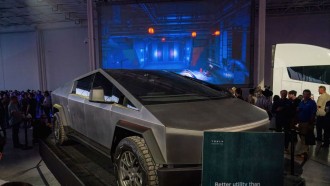Tiny, floppy disk-sized spacecraft known as Sprites could soon lead mankind into reaching other star systems and beyond.
Complete with a radio transceiver, solar cells and a mini-computer, Sprites run on technology based on an even smaller version of CubeSats known as ChipSats.
By late August, a project called KickSat-2 led by scientists from Cornell University will dispatch 100 Sprites to the International Space Station (ISS).
As soon as the Sprites reach the habitable satellite, they will test their navigational hardware and communications systems before burning up in orbit.
The hope for these tiny satellites is for them to reach the solar system's nearest neighbor, Alpha Centauri.
This plan was echoed earlier this year by high profile names such as Stephen Hawking and Russian billionaire Yuri Milner who plan to send tiny probes to the same star system through a program called Breakthrough Starshot.
The lead engineers of KickSat-2, Zachary Manchester and Mason Peck, are actually part of the advisory committee on Breakthrough Starshot. In fact, the potato chip-sized computer that Milner held up during a press conference in April was designed by Manchester.
Brett Streetman, an engineer from nonprofit Draper, which began developing ChipSat technology six years ago, says ChipSats are not meant to replace large spacecraft.
"We imagine sending them to places where you wouldn't want to risk sending your normal spacecraft, or leveraging the physics of getting that small," says Streetman.
Indeed, using and sending ChipSats to far away parts of the known universe has lots of advantages. Because Sprites are very lightweight and small, they have the ability to reach high and relativistic speed. This cuts the time it takes to explore the entire solar system.
Add speed to the disposability of ChipSats, and one will get cost-effective options for diving deep into space, investigating Saturn's moons, attempting dangerous landings on comets, and sailing away from the solar system then sending information back to Earth.
In 2011, three of the first-generation Sprites that Manchester and Peck developed were strapped to the exterior of the ISS. These ChipSats were left to absorb a hefty amount of radiation. Years later, the disposable hardware were still functioning when astronauts retrieved them.
By April 2014, KickSat-1 was sent into orbit for the technology's first-ever large-scale field test. Unfortunately, the container failed to deploy cargo after being thumped by cosmic radiation.
Meanwhile, the KickSat-2 project team needs to prove that the tiny Sprites can work in orbit. Their payload carries the largest number of ChipSats ever to be deployed in a single mission.









